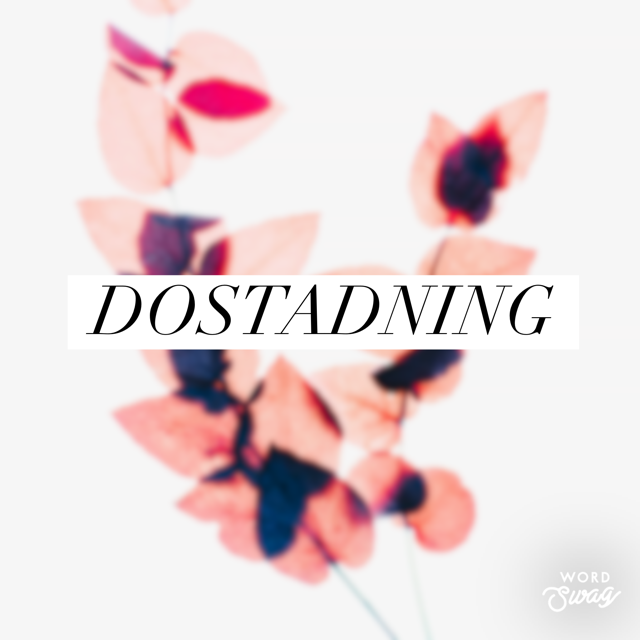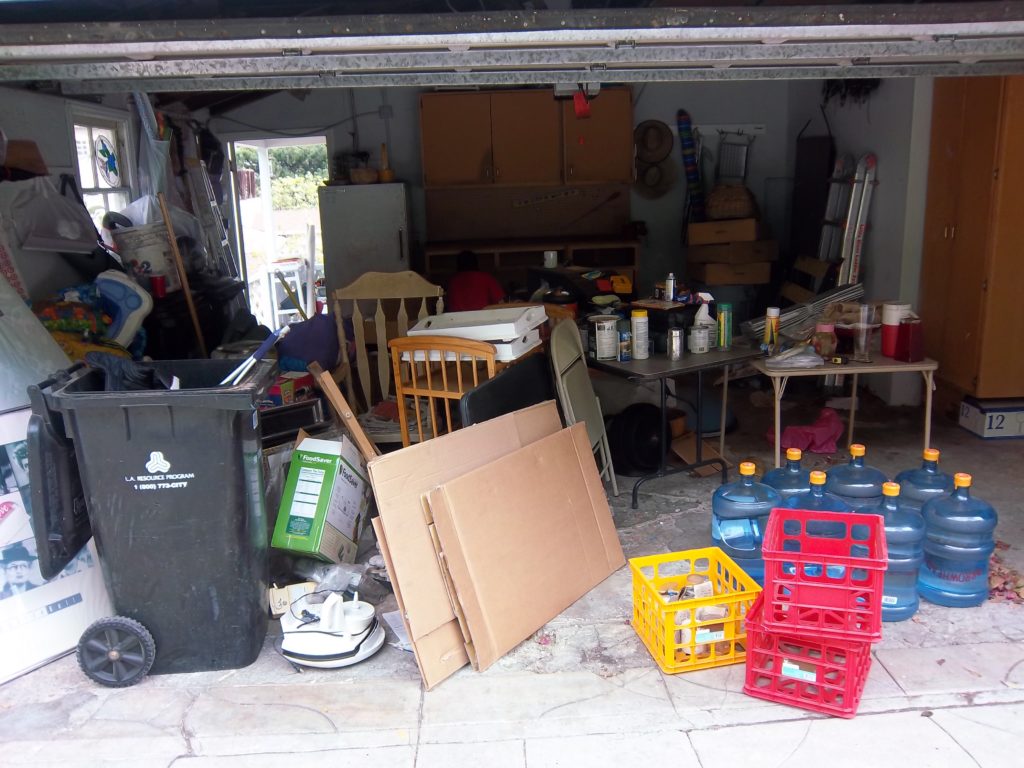What is Dostadning?
I own a professional organizing company that has been around for over 10 years. During that time, I have worked with numerous families that have lost a loved one. They have hired me to deal with that person’s belongings now that they are gone. That could be in the form of an estate sale or just clearing out the home so they can sell it. Regardless of the reason, I hear the same thing time and time again. As the family goes their loved ones’ belongings they say, “Wow…they sure did have a lot of stuff.” That is usually followed by something to the effect that they don’t want their kids to have to deal with their things.
Which brings me to “dostadning.” So, what is this you ask? “Dostadning” is a Swedish word that literally means “death cleaning.” “Do” means death and “standing” means cleaning. I know…you are still confused. Death cleaning is a form of decluttering before a person dies so that the family has an easier time dealing with everything once they are gone. It is recommended for people over the age of 50 to start the process but it is good practice for those of any age. Most of the time when a loved one passes away the thought of dealing with everything while grieving is very daunting. In fact, according to a nine year project conducted by anthropologists at UCLA the average American family has more than 300,000 items in their home. They even created a video series and wrote a book about the study. The thought of dealing with some 300,000 items is enough to send anyone over the edge. I know that number sounds crazy but when you think about each item individually… each fork, each piece of clothing, each barrette, each can of food, each toy, etc. it makes a bit more sense. It still sounds crazy but it makes more sense. And, obviously, the bigger the home the more things they will have.

While the concept seems to make sense, the name oftentimes will scare people into not doing anything. Let’s face it no one wants to really talk about the inevitable. We will all one day “meet our maker” as my grandmother used to say. So why not help to make the process easier for our family?
How to Talk About Death
Aging is a part of life as well as dying. As we age so do our parents. That is if we are lucky. Nonetheless, by the time our parents have reached a certain age category most of us have moved out and are living in our homes with our own stuff. The elephant in the room is knowing that sometime in the future we will have to deal with our parents’ death which ultimately means we will be dealing with their homes and their stuff. While our parents may want us to have their stuff or at the very least their “treasures and/or family heirlooms,” the reality is we usually don’t want anything because we have our own.
It would be great if everyone was extremely organized and kept a roadmap for everything once they passed away. While some may be, the majority of people leave this earth without so much as a will. In fact, more than 55% of the population do not have any kind of written plan in place. That number is even higher if you are Black or Latino. The hard part is talking to our aging parents about death and their wishes.
So what’s the best way to approach this sensitive subject? Try to make sure the whole family is present. The worst thing you can do is exclude a sibling or other significant family member in this process. The best thing to do when talking to our aging parents about death is to start the conversation before someone turns ill or unable to have the conversation at all. It may take several tries to actually talk about it but it will be well worth it for all parties involved.
How to do Swedish Death Cleaning
So now that you are on board with the process of “dostadning” where do you begin? In reality the process sounds easier than the implementation. It is quite common, especially for those that have remained in a home for decades, to find items that are just as old. When my mother passed away, I was 38 years old and one of the items I found in the basement was my playpen (that’s what they called them back then in the dark ages) or play yard as they are now called, that I used as a baby. Even if she thought she was keeping for her grandchild one day, it would probably so out of code that it wouldn’t even be usable. But still she literally kept it for 38 years! There’s no point in trying to figure out why. The point is that there was no reason for her to keep it. And if she hadn’t already passed away it would probably still be in the basement.
While the reason for doing the “dostadning” is not a happy one, make the process as fun as possible. It doesn’t have to be tragic. My mother would sometimes give me certain things I liked (sometimes reluctantly) or even money because as she would say, “I can’t take it with me.” Invite friends and family over to help. Incentivize them by gifting them items you are willing to part with. That makes it a win/win for everyone. There is no particular process to do Swedish death decluttering. It is more of a jumpstart to getting your affairs in order. Just start in one room. The garage is usually a great place to start because it usually becomes the dumping ground for everything. When you can’t find a home for something the answer is usually to put it in the garage. So, it should be easy enough to declutter what’s here when you probably aren’t using them anyone. Part of the Swedish death cleaning is creating a box for yourself of memorabilia. This box is filled with items that you still want to enjoy currently but that could be discarded later on. You could even mark it “ok to toss when I’m gone.” That alleviates the guilt for your family. Once one room is done move on to the next. And so on and so on.


Benefits of Swedish Death Cleaning
While a person is grieving the one thing you can count on is that your family will be grateful knowing that much of the process has been made easier. Papers are now in order and the belongings in the home have been assigned as to what to do with them. The benefits of Swedish Death Cleaning or “dostadning,” is you have essentially pre-organized things gives your family a roadmap.
As each day passes and each year goes by, and as we age and those around us age, we never want to think about the fact that we won’t be on this earth forever. It’s a harsh reality but it is true for everyone. Having all too much experience with this myself, there is no greater gift you can give to your family than being prepared. If you start sooner than later, you won’t feel so morose. As previously mentioned, don’t wait until you need to do this.
The Swedish artist, Margareta Magnusson, wrote a book on this topic, The Gentle Art of Swedish Death Cleaning. She is a hoot and claims to be somewhere between 80 and 100 years of age. If you want to lighten the mood, this book uses humor in a such a way as to help you to understand the need for this and how to talk your parents about it.

As always you can try and go it alone or you can hire a professional to help you.